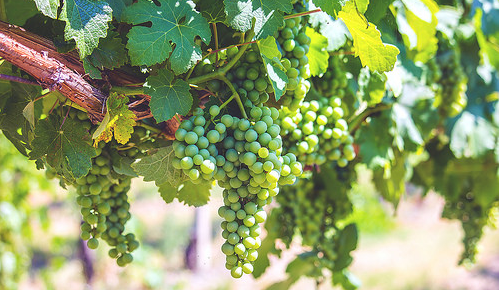
The viticultural sector is one of those most challenged by climate change.
Wine growers deal more and more often with drought, temperature swings and grapes that ripens too early. Terroir system, the set of all environmental factors, including unique environment contexts, soil, climate, farming practices and a crop’s specific growth habitat that gives a wine its distinctive character, could change due to climate change: Chianti, Aglianico, Montepulciano, Nero d’Avola, Champagne, etc, what would they be without the unique environmental and weather conditions of their areas of production?
Tuscany in Italy, Bordeaux and Rhone in France, the Napa Valley in California, etc: the connection between production areas and the agricultural and cultural identity is critical in transforming an ordinary wine into a world-renowned quality one, and climate change could alter the present-day conditions reshaping wine geography.
The expected variability in climate change could in particular have a marked influence on terroir resilience with important effects on local farming communities in viticultural regions. It’s therefore essential to identify the adaptation and mitigation actions that can make local farming communities and crop production more resilient.
A study recently published on Science of The Total Environment (among the authors, CMCC researchers Paola Mercogliano and Edoardo Bucchignani of REMHI Division) realized a dynamic viticultural zoning to explore the resilience of terroir concept under climate change that is able to integrate the effects of climate change on grape quality responses and evaluate terroir resilience, providing a support tool for stakeholders involved in viticultural planning (winegrowers, winegrower consortiums, policy makers etc.).
The study focused on a traditional region devoted to high quality wine production in Southern Italy (Valle Telesina, BN), for a specific grapevine cultivar (Aglianico).
The future climate scenarios have shown a strong effect on viticultural sector.
The results obtained indicate in fact that only 2% of the suitable area of Valle Telesina expresses the concept of terroir resilience orientated towards Aglianico ultra quality grape production.
It is expected that 41% of the area suitable for Aglianico cultivation will need irrigation to achieve quality grape production within 2010-2040.
Moreover, climate change benefits for the cultivation of Aglianico will decrease, as well as the suitable areas, in the next decades.
The team of authors was led by researcher Antonello Bonfante (ISAFoM – CNR).
For further information, read the integral version of the paper:
Bonfante A., Monaco E., Langella G., Mercogliano P., Bucchignani E., Manna P., Terribile F. A dynamic viticultural zoning to explore the resilience of terroir concept under climate change, 2018, Science of the Total Environment, Volume 624, Pages 294-308,
ISSN 0048-9697 DOI: 10.1016/j.scitotenv.2017.12.035


